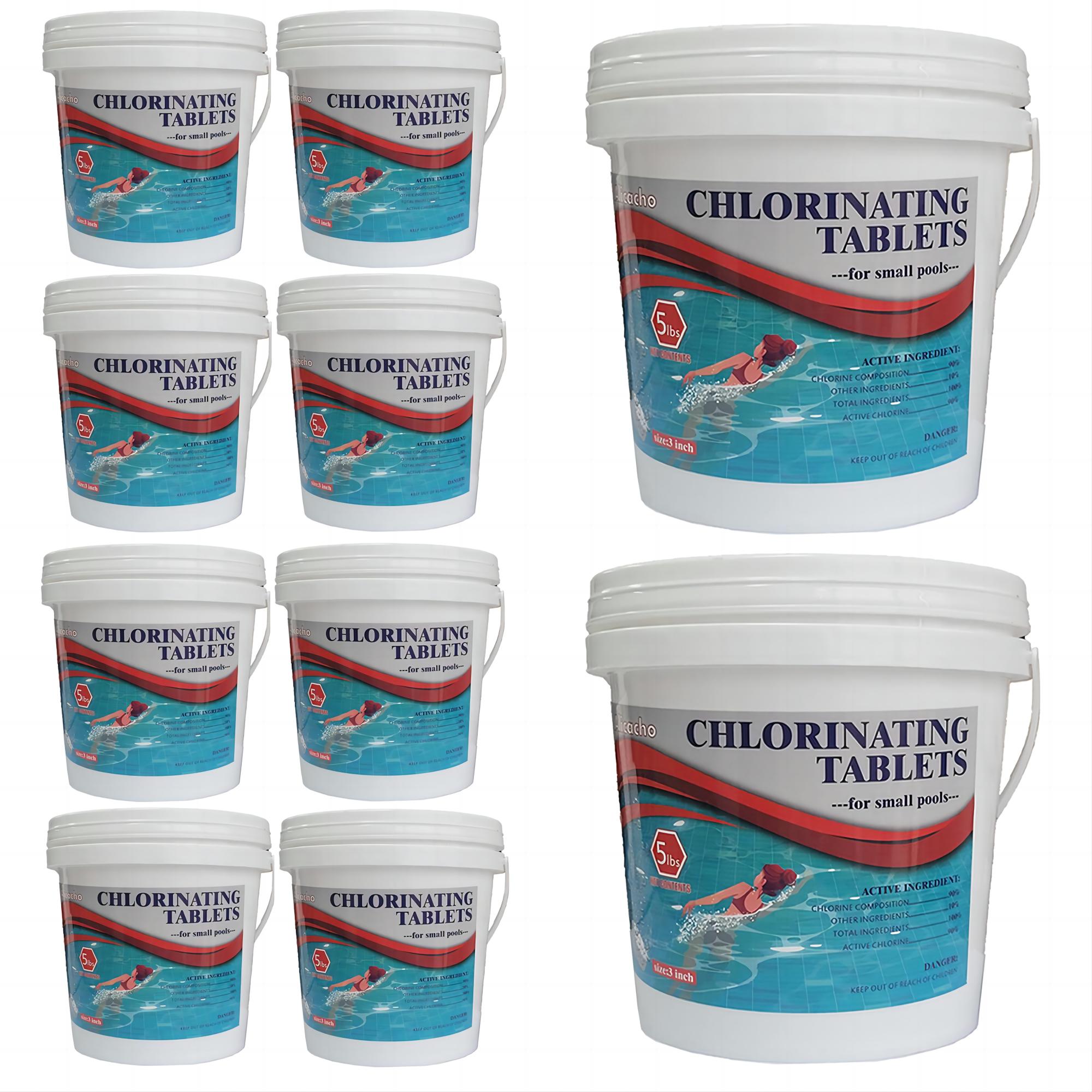One of the basic portions of basic pool maintenance is to maintain levels of chemicals and pool components such as alkalinity. If you are a pool owner, you know how essential it is to maintain water chemistry and components such as alkalinity. Do you have any idea how to increase alkalinity in pool? Well, here, we have a secret, and we are going to share it with you!
One of the key factors that you can use how to increase alkalinity in pool is to add sodium bicarbonate to it, or simply use baking soda. Well, it can be a secret weapon, since it is less expensive and can raise the alkalinity in your pools just how you like and need it.
Part 1. Getting To Know Alkalinity And pH Better
To obtain a well-balanced pool considering pool water chemistry and cleanliness, alkalinity and pH are to be considered. As a pool owner, it is important to understand that pool water can either be acidic or basic and that the level of pool acidity can be determined through the use of a pH scale.
If the pH is low, water is acidic, and once pool water has become acidic, it is expected to cause damage to pool surfaces and equipment. On the other hand, a high pH level means the pool is basic and it can also cause damage to your pool using having another layer or film to all of your pool parts, this is called scaling. So, this means that everything must be kept in the needed range, which is neutral, and in the range between 7.4 and 7.6.
Some pool owners call alkalinity the pH bodyguard, this is because it is needed to maintain alkalinity between the range of 100 and 150 ppm to keep a stable pH.

Part 2. Is Baking Soda Useful For Pools?
As we have said before, one of the ways how to increase alkalinity in pool is to use baking soda. But what does baking soda do for your pools?
Baking soda, or sodium bicarbonate is an alkaline. It has a pH of 8, and once it is added to your pool water, pH and alkalinity can be both raised, and clarity and stability will be improved. Some of the products that are used to raise the alkalinity in pools use baking soda as their main ingredient. Well, the secret of using baking soda instead of buying commercial pool products to increase pool alkalinity is cheaper and can help you save a huge amount of money while achieving good and expected results.
Solving Common Pool Problems With Baking Soda
1. Will Baking Soda Kill Algae?
While baking soda alone may not directly kill algae, maintaining the proper balance of pH and alkalinity is crucial for a stable chlorine level, which aids in eliminating pool algae and preventing its return. If you've observed signs of algae infestation, such as a slippery pool surface, slimy walls, or greenish water, taking prompt action is essential.
To effectively combat algae, use an algaecide and perform super chlorination. After treatment, use testing kits to assess the water's pH and alkalinity. Adjust the alkalinity to 100 ppm by adding baking soda and ensure the pH falls within the range of 7.2 to 7.8 ppm. This comprehensive approach helps eradicate algae and maintains a healthy pool environment.
2. Can Soda Remove Calcium Buildup from Pool Tiles?
If the alkalinity is high, pool scaling is highly possible to build up. Hard water is also possible to obtain. You have to refrain from using calcium-based products and stick to increasing the alkalinity of your pools and keep them in the range between 80 and 110 ppm. You can add baking soda to reach the needed levels of alkalinity.
3. Will Baking Soda Solve Pool Corrosion?
Low levels of alkalinity can result to having corroded ladders or pipes, and pits on tiles or pool liners. Test your level of alkalinity and add baking soda as needed.
4. Will Baking Soda Clear a Cloudy Pool?
To remedy cloudy pool water, superchlorination is often the most effective solution. After the hyper-chlorination treatment, it's crucial to test the pH levels. If necessary, gradually add baking soda to the pool water to achieve a pH between 7.2 and 7.8. Elevated pH levels can contribute to cloudiness.
Part 3. How To Increase Alkalinity In Pools Using Baking Soda?
One of the ways how to increase alkalinity in pool is by adding baking soda. It must be added properly, and specific procedures must be followed to maintain the needed levels by your pool.
Step 1. The initial step on how to increase alkalinity in pool using baking soda is to test the level of alkalinity of your pools in a daily manner. The ideal pH is between 7.2 and 7.8 whilst the alkalinity is between 110 and 150 ppm. Once a lower level is reached based on the range given, alkalinity needs to be raised.
Step 2. Once you determine the level of alkalinity of your pools, there can be a chance that you have to add baking soda to balance it and obtain the needed range. You can purchase baking soda in bulk as it can be cheaper, and easier to get when needed.
Step 3. Now, that you have your baking soda with you, it is needed that you also know the amount of baking soda that must be added to your pool. The usual consideration is, that for every 10,000 gallons of water, 1.5 lbs of baking soda must be added to increase the alkalinity by about 10 ppm.
Three to four pounds of baking powder is needed to be added to your pool in case the pH is below 7.2. It is also safe that you add one-half or three-fourths of the required amount of the chemical and add the remaining amount as needed. Then, run a testing if the level of pH and alkalinity is already reached.

Step 4. Now, add the baking soda to your pool, the good thing about sodium bicarbonate is, that it is in powder form and can be easily sprinkled into your pool water as needed. It is good to ensure that it is not windy during application since baking soda is in powder form.
Step 5. Once baking soda is already applied to your pool, wait for about six hours to let the sodium bicarbonate dissolve in your pool water. To help the baking soda disperse, you can turn on the circulation system of your pool.
Step 6. Once you are done, you can now retest your pool water to determine the level of alkalinity. You have to do the retesting between 6 and 24 hours after the baking soda has been added and dissolved in your pool. If the needed range is not yet met, you can repeat the process from the beginning, and retest once more.
This is how to increase alkalinity in pool using baking soda or sodium bicarbonate. Once everything is followed and needed chemical levels are added, perfect and balanced water chemistry can be finally obtained.
Part 4. How Much Baking Soda Must Be Added to Your Pool?
It is needed that you are aware of the proper levels of baking soda that you should be adding to your pools to obtain needed levels of pH or alkalinity. We have provided a table below based on the rule of thumb where 680 grams or 1.5 pounds of baking soda must be used per 10,000 gallons of pool water. By adding said amount of baking soda, an increase of 10 ppm in alkalinity level is expected.
|
Pool Volume (Gallons) |
Amount of Baking Soda (Pounds) |
|
5,000 |
0.75 |
|
10,000 |
1.5 |
|
15,000 |
2.25 |
|
20,000 |
3 |
On the other hand, the amount of baking soda varies depending on the amount of ppm that you want to obtain. If you want to increase the ppm by another 10, you are expected to increase the amount of baking soda to add to your pool water.
It is needed that all components and amounts are considered and checked, as this will help you achieve the desired results on how to increase alkalinity in pool.
Part 5. To Summarize It All
There are many possible products that we can use to increase the alkalinity levels in pools, more so, to achieve needed levels to balance water chemistry and obtain a pool that is sparkling clean on the outside, and inside. Regular testing of these chemicals and components to achieve needed levels must be part of the daily or weekly maintenance checklist of every pool owner. It is great that through the help of sodium bicarbonate, increasing the levels of alkalinity is not that hard to do. And it is even cheaper compared to commercial products being sold in the market which could also bring the same result.




